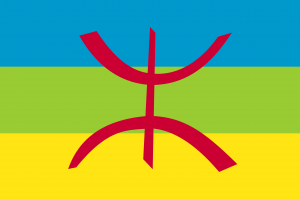Language/Central-atlas-tamazight/Grammar/Pronouns
Hi Central Atlas Tamazight learners! 😊
In today's lesson, we will be discussing pronouns in Central Atlas Tamazight. We will look at the different types of pronouns, how they are used, and how to form them. By the end of this lesson, you should have a good understanding of Central Atlas Tamazight pronouns.
Types of Pronouns
Pronouns are words that can replace nouns or noun phrases. In Central Atlas Tamazight, there are three main types of pronouns: personal pronouns, possessive pronouns, and demonstrative pronouns.
Personal Pronouns
Personal pronouns are used to refer to people or things. They can be singular or plural, and they can be either masculine or feminine. Here are some examples of personal pronouns in Central Atlas Tamazight:
- Singular Masculine: ɣer (he), ɣer-as (him)
- Singular Feminine: tt-i (she), tt-i-as (her)
- Plural Masculine: ɣer-an (they), ɣer-an-as (them)
- Plural Feminine: tt-in (they), tt-in-as (them)
Possessive Pronouns
Possessive pronouns are used to show ownership or possession. They can also be singular or plural, and they can be either masculine or feminine. Here are some examples of possessive pronouns in Central Atlas Tamazight:
- Singular Masculine: ɣer-es (his)
- Singular Feminine: tt-i-es (hers)
- Plural Masculine: ɣer-an-es (theirs)
- Plural Feminine: tt-in-es (theirs)
Demonstrative Pronouns
Demonstrative pronouns are used to point out specific people or things. They can also be singular or plural, and they can be either masculine or feminine. Here are some examples of demonstrative pronouns in Central Atlas Tamazight:
- Singular Masculine: ɣer-a (this one), ɣer-a-s (that one)
- Singular Feminine: tt-i-a (this one), tt-i-a-s (that one)
- Plural Masculine: ɣer-an-a (these ones), ɣer-an-a-s (those ones)
- Plural Feminine: tt-in-a (these ones), tt-in-a-s (those ones)
Forming Pronouns
Pronouns in Central Atlas Tamazight are formed by adding suffixes to the root word. For example, the root word for "he" is ɣer, and the root word for "his" is ɣer-es.
The suffixes used to form pronouns depend on the type of pronoun being formed. For example, the suffix -es is used to form possessive pronouns, while the suffix -a is used to form demonstrative pronouns.
It is important to note that the suffixes used to form pronouns can change depending on the gender and number of the pronoun. For example, the suffix -es is used to form singular masculine possessive pronouns, while the suffix -in-es is used to form plural feminine possessive pronouns.
Conclusion
In this lesson, we discussed pronouns in Central Atlas Tamazight. We looked at the different types of pronouns, how they are used, and how to form them. We hope that this lesson has helped you gain a better understanding of Central Atlas Tamazight pronouns.
If you have any questions, please ask them in the comments section below.
Feel free to edit this wiki page if you think it can be improved. 😎

